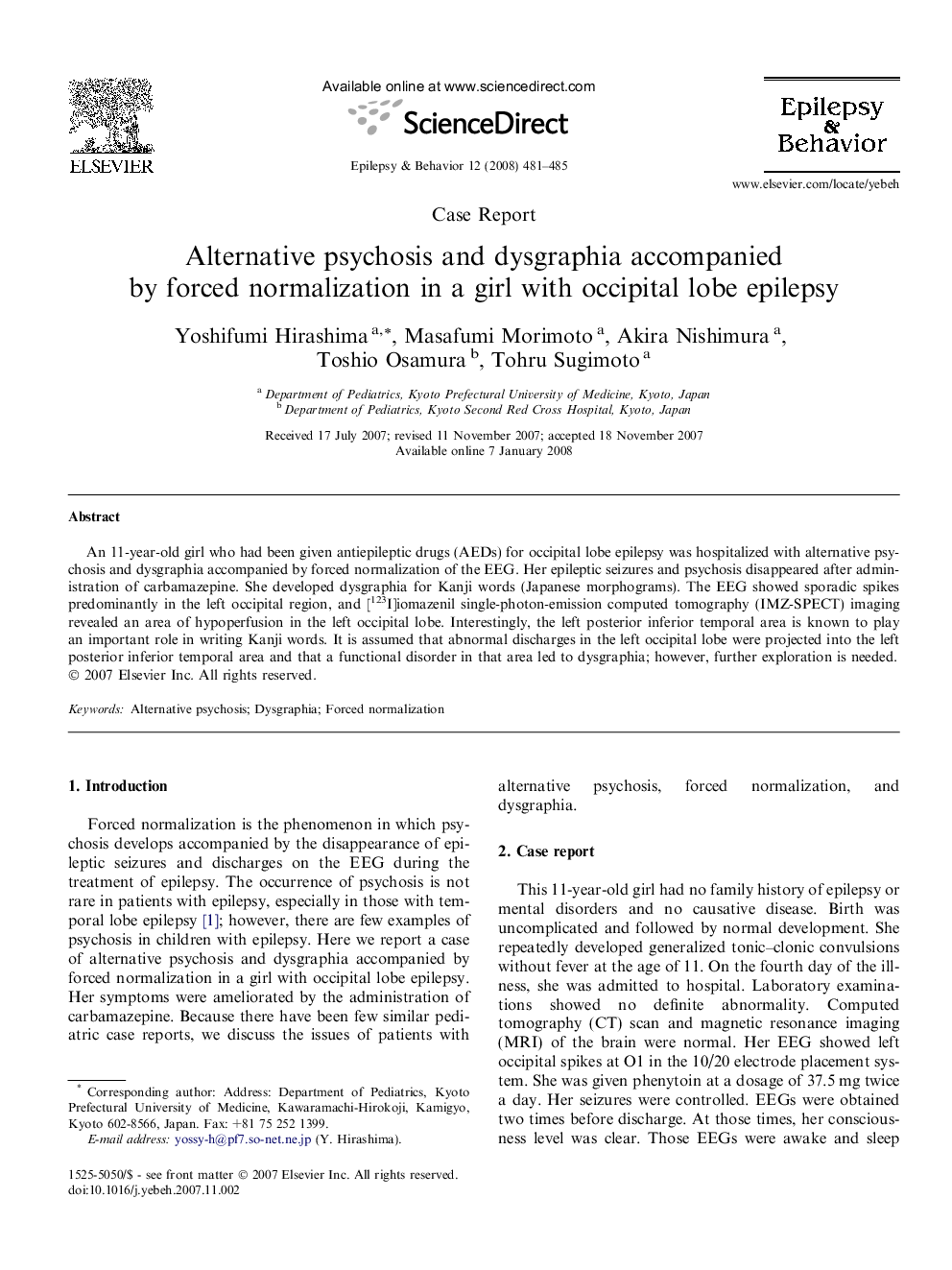| Article ID | Journal | Published Year | Pages | File Type |
|---|---|---|---|---|
| 3051324 | Epilepsy & Behavior | 2008 | 5 Pages |
An 11-year-old girl who had been given antiepileptic drugs (AEDs) for occipital lobe epilepsy was hospitalized with alternative psychosis and dysgraphia accompanied by forced normalization of the EEG. Her epileptic seizures and psychosis disappeared after administration of carbamazepine. She developed dysgraphia for Kanji words (Japanese morphograms). The EEG showed sporadic spikes predominantly in the left occipital region, and [123I]iomazenil single-photon-emission computed tomography (IMZ-SPECT) imaging revealed an area of hypoperfusion in the left occipital lobe. Interestingly, the left posterior inferior temporal area is known to play an important role in writing Kanji words. It is assumed that abnormal discharges in the left occipital lobe were projected into the left posterior inferior temporal area and that a functional disorder in that area led to dysgraphia; however, further exploration is needed.
